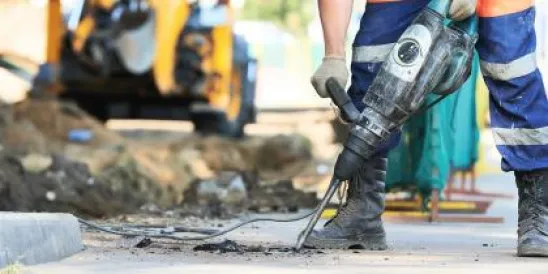In one of the Trump Administration’s final acts of 2017, the U.S. Bureau of Land Management (BLM) formally announced on December 29, 2017, its rescission of the 2015 final rule regarding hydraulic fracturing on federal and tribal lands (2015 final rule). This action came as little surprise given the March 2017 statement from the U.S. Department of the Interior (DOI) – which oversees BLM – of its intent to rescind the rule, followed by the BLM’s publication of a proposed rule to rescind the 2015 final rule on July 25, 2017. Nonetheless, the debate over federal regulation of hydraulic fracturing on public lands is far from over, and the rescission of the 2015 final rule will no doubt be challenged in federal court.
Background
Federal regulation of hydraulic fracturing on federal and tribal lands was conceptualized during the first term of the Obama Administration. Secretary of the Interior Ken Salazar hosted a forum on hydraulic fracturing on public lands in November 2010, and BLM published a proposed rule on May 11, 2012. After receiving over 170,000 public comments, BLM re-proposed the rule in May 2013, citing a need for “further improvements and clarifications.” BLM issued the final rule on March 26, 2015, with an effective date of June 24, 2015.
The 2015 final rule would have set new well construction requirements, water management rules, and chemical disclosure standards for hydraulic fracturing activities on federal and tribal lands. In addition, it would have implemented certain best-practice procedures and required those seeking to engage in hydraulic fracturing on federal and tribal lands to obtain BLM approval for such activity. The 2015 final rule never took effect due to litigation filed immediately upon issuance of the rule.
Practical Implications of Rescission
As a result of the rescission of the 2015 final rule, the regulations existing immediately prior to the published effective date of the 2015 final rule (June 24, 2015) are restored, except for changes to those regulations that were made by other rules published between the date of publication of the 2015 final rule and December 29, 2017. In addition, performance of “nonroutine fracturing jobs” after BLM’s initial approval of the Application for Permit to Drill (APD) will no longer require prior approval.
Despite concerns expressed by environmental groups, rescission of the 2015 final rule will not result in hydraulic activities on federal and tribal lands being conducted without regulation or oversight. As BLM noted in the rescission notice and the Regulatory Impact Analysis (RIA) supporting the rescission, all 32 of the states with federal oil and gas leases have laws or regulations addressing hydraulic fracturing activities. Moreover, oil and gas operators already provide information to the public regarding the chemical content of hydraulic fracturing fluids using databases, such as FracFocus.
Potential Legal Challenges
Legal challenges to BLM’s rescission of the rule are expected. In the preamble to the December 2017 rule, BLM defends its position that it has authority to rescind the 2015 final rule and to restore the regulations existing prior to the 2015 rule with limited exceptions. BLM points out that no statute requires BLM to regulate hydraulic fracturing operations and no statute requires all oil and gas operations on federal lands to be subject to the same regulations. Commenters on the proposed rule argued, among other things, rescission of the 2015 final rule would violate the Administrative Procedure Act, the Federal Land Policy and Management Act, the Mineral Leasing Act, and the National Environmental Policy Act. BLM and environmental groups appear to be digging in for a fight.
Interestingly, BLM does not concede in the preamble to the December 2017 rule that the agency lacks the statutory authority to regulate hydraulic fracturing on federal and tribal lands, which was the main issue in legal challenges to the 2015 final rule. Rather, BLM sidesteps the issue by taking the position that rescission of the 2015 final rule alleviates concerns over BLM’s authority to issue the rule in the first place. BLM states in the preamble that rescission of the 2015 final rule not only relieves operators of duplicative, unnecessary, costly and unproductive regulatory burdens, but also “eliminates the need for further litigation about BLM’s statutory authority.” If only it were that easy. Although the 2015 final rule has been rescinded, the debate and litigation over BLM’s authority to regulate hydraulic fracturing on federal and tribal lands is expected to continue on for years to come.




 />i
/>i

